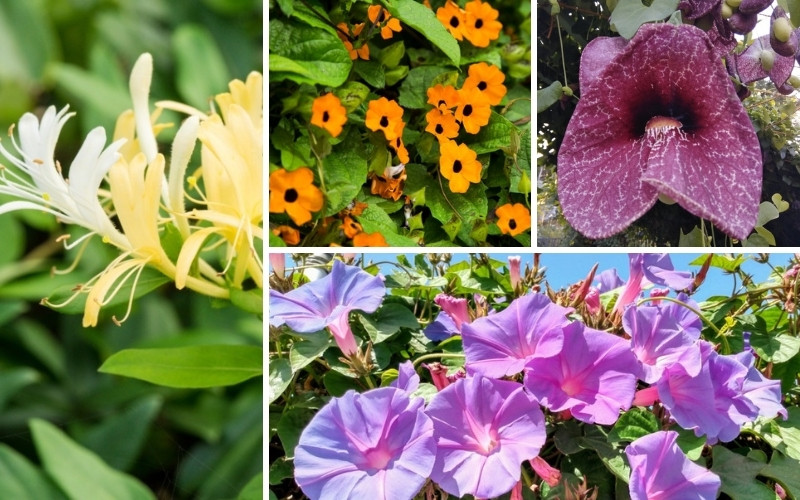California encompasses many USDA hardiness zones, from 4b to 11a. Needless to say, it’s a gardener’s dream since you can grow several different types of vines depending on where in California you live.
We’ve compiled some of the most popular vines that grow in California. Make sure to read their growing requirements, as they require different soil, water, and sunlight conditions.
Here is a list of 10 Popular California Vines
California Honeysuckle (Lonicera hispidula)
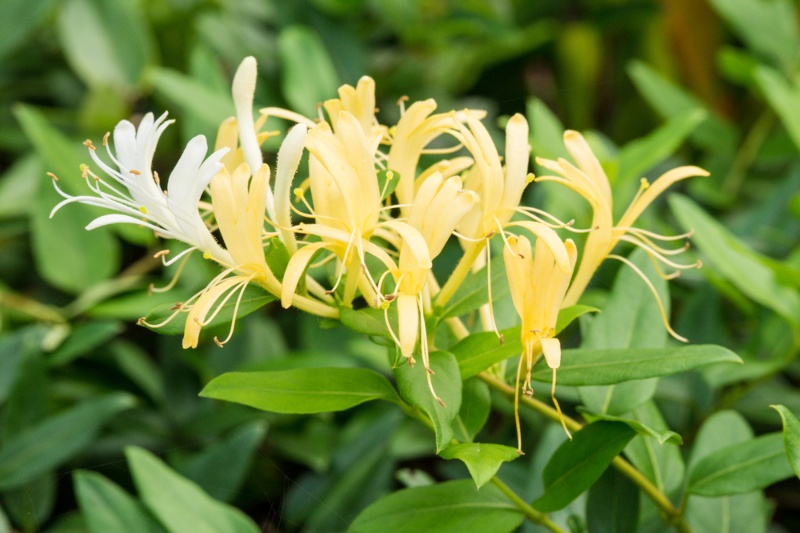
The California honeysuckle is a vine that grows like a shrub if it doesn’t encounter items to crawl up. When it does latch onto an object, it can grow as high as 20 feet. Pink, purple, and red blossoms begin in the spring, and the flowers remain through the summer.
California honeysuckles grow best in woodlands and thrive with any amount of sunlight or shade. They have a high drought tolerance but can also handle occasional flooding, and you can grow them in USDA zones 7 – 9.
California Morning Glory (Calystegia macrostegia)
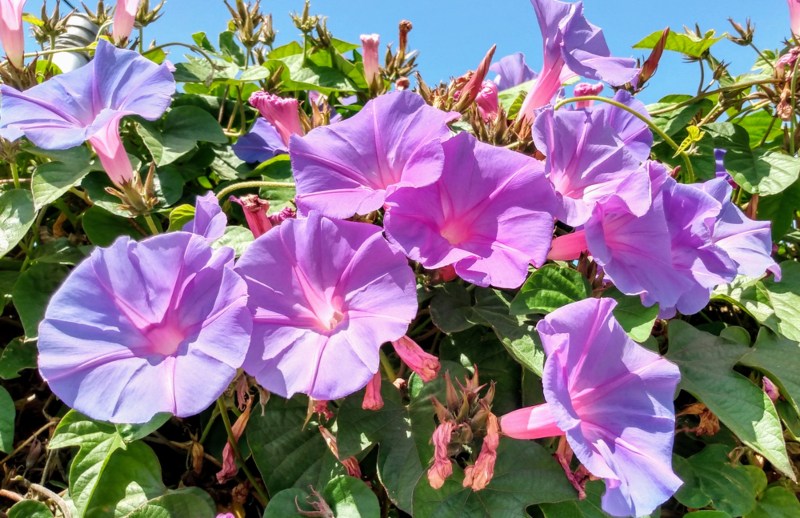
Large, cream-colored flowers with a pink hue are iconic of the California morning glory. The perennial vine has a woody texture and can grow over 25 feet long. It has triangular, 10-centimeter wide leaves. Because of its thick nature, it makes an excellent fence cover.
The California morning glory grows best on rocky and sandy surfaces. It likes full coastal sun but can handle afternoon shade. It needs periodic watering because it’ll become dormant if there’s a long drought. You can grow California morning glory in USDA zones 3 – 10.
Black-Eyed Susan Vine (Thunbergia alata)
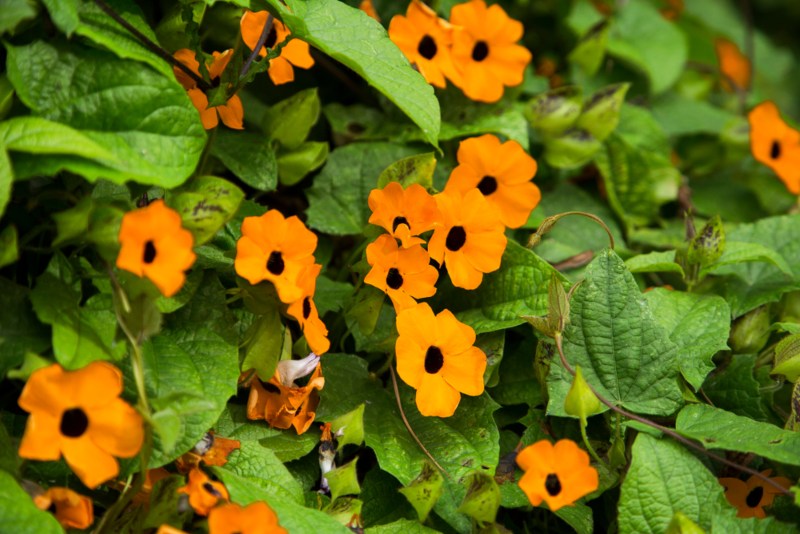
The black-eyed Susan is a fast-growing perennial vine that reaches up to eight feet long. It has rich green leaves and yellow, orange, or white flowers framing a dark brown center.
Black-eyed Susans prefer temperatures in the 70s and may die in extreme heat. They need a trellis or vertical structure to wrap themselves around and well-draining soil. You should ensure the ground remains moist without overwatering. You can grow black-eyed Susans in USDA zones 10 – 11.
Western White Clematis (Clematis ligusticifolia)
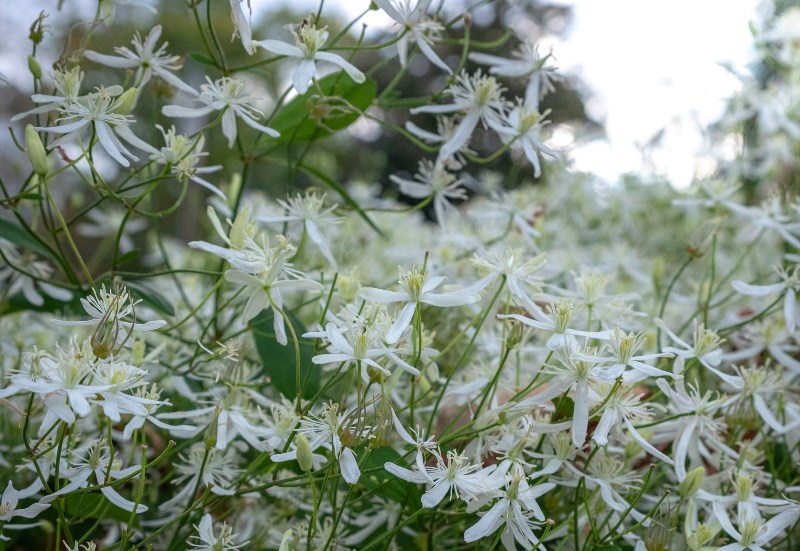
The woody western white clematis vine can grow over 20 feet and fills with cream-colored flowers from April – August. Silky seeds eventually replace the flowers, and this vine has deciduous leaves containing up to seven leaflets.
You should plant your western white clematis in nutrient-rich, well-draining soil. It enjoys full sun in cooler climates and partial shade in hot areas. You should cut it down to one foot above the ground every three to five years to spark new growth. The western white clematis grows in USDA zones 5 – 7.
Chaparral Clematis (Clematis lasiantha)
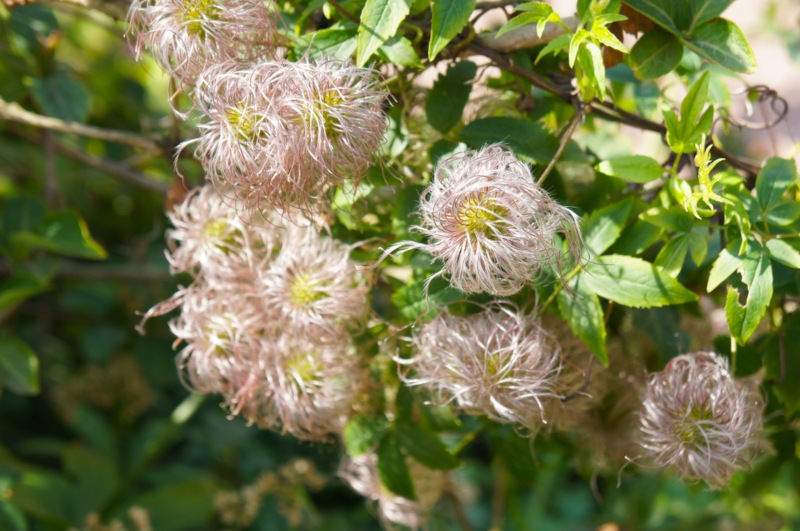
Chaparral Clematis is a vine that grows one to three flowers per stalk. The flowers are a creamy white color with many thin strands projecting outward. The leaves have three lobes and grow up to five centimeters, with the whole plant growing up to 15 feet tall.
You’ll need to plant Chaparral Clematis below 1,800 meters, preferably on hillsides or open woodlands. It grows best in partial shade and in rocky, well-draining soil. You can water it once or twice per month in the summer. Chaparral Clematis grows in USDA zones 5 -10.
Coast Man-Root (Marah oregana)
The Coast Man-Root has prickly stems with large leaves that grow up to eight inches each. Its leaves have five to seven points, and small white flowers with five petals emerge in the spring. Over the summer, it produces a prickly cucumber-like fruit with a bitter taste.
As its name suggests, Coast Man-Root prefers growing in coastal areas, although you can also grow it in meadows and forests. It has excellent tolerance for soils of all pH types and can grow in sunny and shady areas. It grows in USDA zones 8b – 11.
Pacific False Bindweed (Calystegia purpurata)
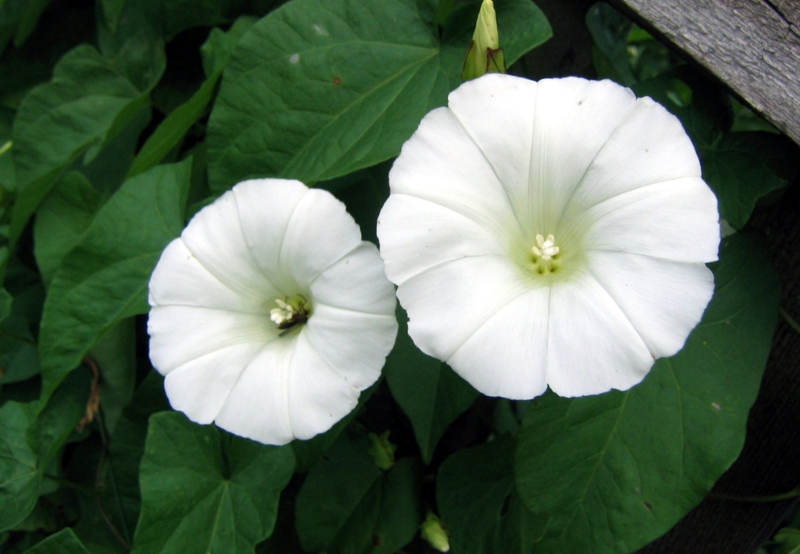
Pacific False Bindweed is a type of morning glory with a woody caudex and grows up to two feet tall. Up to five flower clusters occur per peduncle, and the flower remains from the spring to the fall.
You’ll need to water your Pacific False Bindweed biweekly and plant it in a chaparral valley or along the coast. It needs full sun and mesic soil, which retains moisture without getting too soggy. You can grow Pacific False Bindweed in USDA zones 8 – 10.
California Grape (Vitis californica)
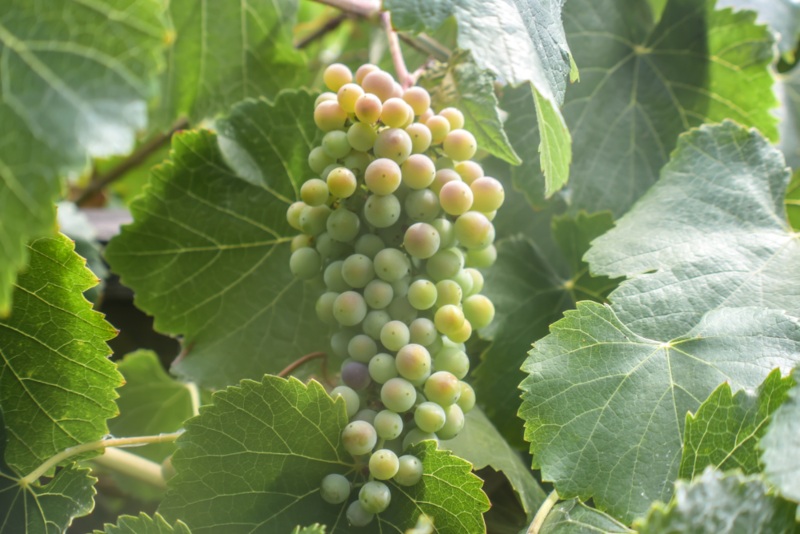
The famous California grape produces tasty wild grapes for local wildlife. It grows over 30 feet long, and its green leaves turn orange or yellow in the fall, which is when it produces sour purple grapes.
The California grape needs moist soil and frequent watering until it becomes established. After that time, it can tolerate drier climates. It grows well near water sources and makes for excellent fence cover. You can grow it in USDA zones 7a – 10b.
California Dutchman’s Pipe (Aristolochia californica)
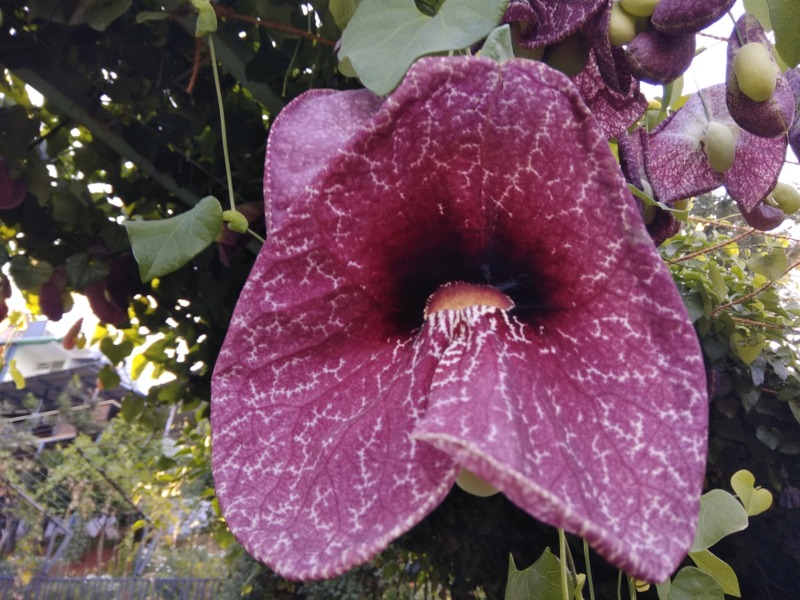
The deciduous California Dutchman’s Pipe produces stunning white flowers with purple stripes. It flowers in the winter and spring before developing green fruit. If you don’t offer it a trellis to grow on, it may overtake your garden, covering nearby plants.
California Dutchman’s Pipe likes moist environments, such as in woods and near streams. It grows best below 1,500 feet and in soil that drains slowly. You should provide it with partial shade and grow it in USDA zones 8 – 10.
San Diego Sweetpea (Lathyrus laetiflorus alefeldii)
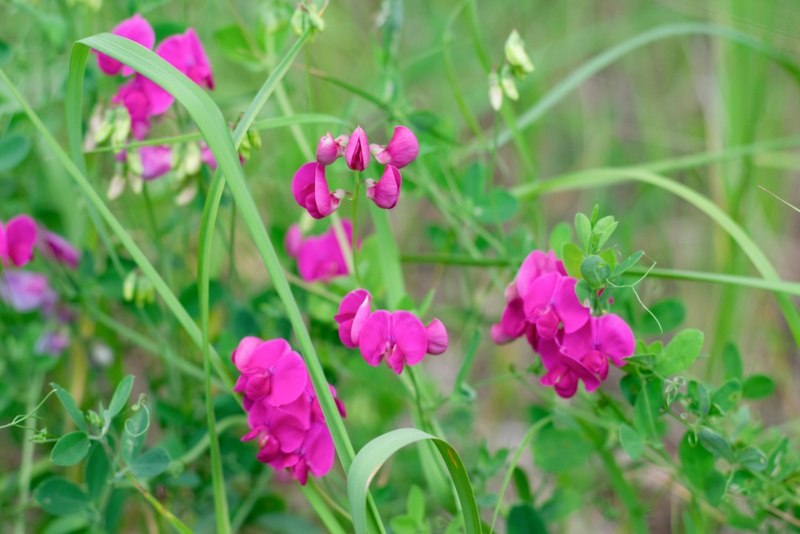
The San Diego sweetpea is a colorful perennial vine, producing fragrant purple flowers from the spring into the early summer. It grows up to six feet tall, and pinching off some of the blooms will encourage more buds to form.
It grows in elevations below 4,000 feet and can thrive with lots or little sun. Consider planting your San Diego sweetpea on a slope or in an area with scrub, such as chaparral. It grows in USDA zones 8a – 10a.
Conclusion
California’s wide range of USDA zones means that you can grow many types of vines depending on the region where you live. By following the guidelines we shared here, you’ll ensure your vines have a long lifespan and produce many flowers.


